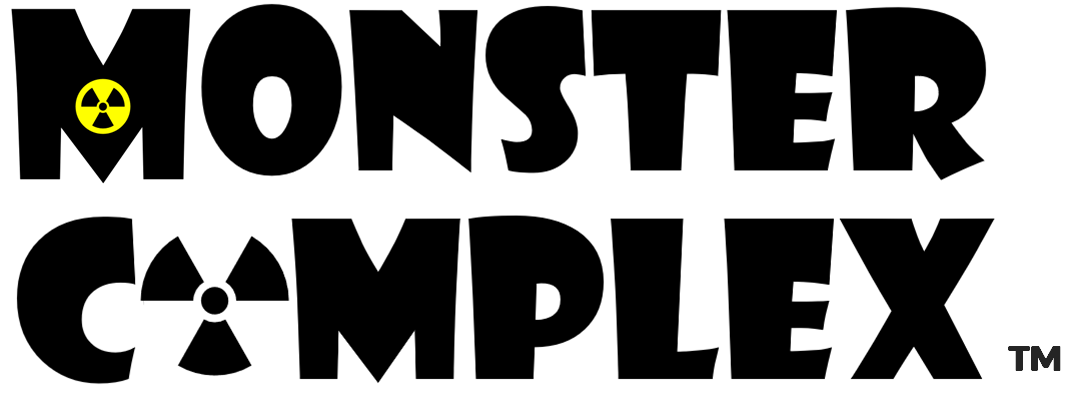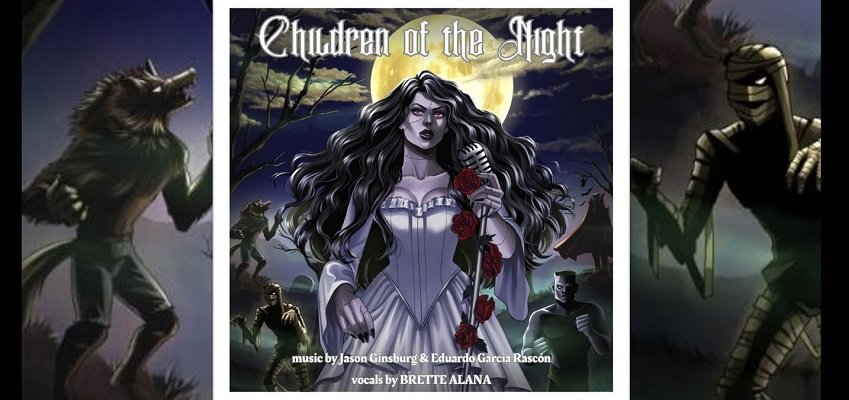Storied: The Golden Age of Movie Monsters—celebrating classic monster movies
As an Amazon associate I earn from qualifying purchases. (At no additional charge to you.)
“I can’t help but wonder if the commercial and critical failure of some of the reboot attempts is because they strayed too far from the original Universal monster formula.”—Dr. Emily Zarka
When you list off the most intriguing monsters, so many of the names on that list refer to the classic figures from the original Universal Monster movies. Often based on classic literature, folktales and legends, these films have created a remarkably relatable series of stories that are equally human and inhumane. These monsters often capture our hearts because we can relate to them. They are not just terrors—they are often victims themselves.
In the video below, the folks at Storied celebrate the classic era of the original Universal Monster movies: “Some monsters call to mind very specific images. Their iconic on-screen personas overshadow their earlier histories. I’m talking about: Frankenstein and his Creature, Dracula, the Invisible Man, the Wolf Man, the Mummy. Why is this? Universal Pictures. These famous Monster faces inspired decades of Halloween costumes, and make up a distinctive brand of horror that defined early Hollywood cinema.”
Want more info on these classics? Below we also have more info and bonus links to other articles about each of them.
Find Universal Monsters box sets at Amazon
Monster Complex uses Amazon affiliate links
The Golden Age of Movie Monsters | Storied
Host Dr. Emily Zarka: “Founded in 1912, Universal Film Manufacturing Company initially saw critical and financial success but like most of America, struggled during the Great Depression. The solution to the studio's woes came in an unexpected form, monsters. Universal's 1930s business strategy started with a plan to make movies on as tight a budget as possible, and horror fit the bill nicely.”
If you want more articles on classic monsters—Frankenstein’s monster, Dracula, Wolf Man, and more!—check out Monster Complex’s UNIVERSAL MONSTERS category for related movies, books, TV shows, comic books, and more!
More about the Universal Monsters
More about Dracula
Vampire legend Dracula first appears in Bram Stoker’s 1897 novel Dracula. Undead for hundreds of years, he keeps his own life by sucking blood from his victims. He can turn others into vampires, and is able to change his form to become such things as a bat, a wolf, a fog, or mist. His weaknesses include religious symbols. Monster Complex offers more info about the novel and official follow-up books here.
Dracula has appeared in many adaptations, riffs, and parodies in all kind of media. More than 200 films have been made that feature Count Dracula, a number that is reportedly only second to films featuring Sherlock Holmes. The most popular version of the character comes from 1931’s Dracula starring Bela Lugosi. See the whole list of official Universal films here: Dracula: Complete Universal Monsters Movies.
Related links:
More about Frankenstein’s Monster
The character of Frankenstein’s Monster was first seen in Mary Shelley’s 1818 novel Frankenstein; or, The Modern Prometheus. The creation of Victor Frankenstein, Frankenstein’s Monster—who, since he is considered to be Frankenstein’s son, means it’s OK to call him by the same name—was a new kind of person stitched together from the body parts of dead humans.
Monster Complex has more info about the book here:
Frankenstein: Everything You Need to Know to Read Mary Shelley’s Novel
Mary Shelley’s Frankenstein: 13 Facts About One Of the Most Influential Books in Literature.
Frankenstein’s monster has been featured in lots of media, including films, television, stage productions, video games, and everything else. The most popular version of the character comes from his appearances in Universal Monsters films, starting with 1931’s Frankenstein starring Boris Karloff. See the monster’s whole film series listed here: Frankenstein: Complete Universal Monsters Movies.
Find Frankenstein movies at Amazon
Related links:
More about the Invisible Man
Legendary author H.G. Wells wrote the 1897 classic science fiction novel The Invisible Man. The title character is a scientist who invents the ability to becom invisible—and then finds his sanity driven away until he becomes a murderer and a terror to locals.
The 1933 Universal movie The Invisible Man was directed by James Whale and starred Claude Rains, Gloria Stuart and William Harrigan. Unlike some other Universal monster movie series, the sequels to The Invisible Man featured various characters who took invisibility in different directions.
These movies included…
The Invisible Man Returns (1940) with Vincent Price, Cedric Hardwicke, Nan Grey, John Sutton
The Invisible Woman (1940) with Virginia Bruce, John Barrymore, John Howard
Invisible Agent (1942) with Peter Lorre
The Invisible Man’s Revenge (1944) with Evelyn Ankers
Abbott and Costello Meet the Invisible Man (1951)
Find Invisible Man movies at Amazon
Related links:
More about the Wolf Man
Although not Universal's first werewolf picture, 1941’s The Wolf Man launched one of the most important series in the Universal Monsters movies canon, one infused as much with tragedy as with horror. It was through this series that the studio saw a way to combine together different franchises—crossing over the Wolf Man films with Frankenstein, Dracula, and even Abbott and Costello.
The original Universal Monsters character the wolf-man first appeared in 1941’s The Wolf Man. See the list for his whole film series here: Wolf Man: Complete Universal Monsters Movies.
Inspired by folktales and legends, much of what we think about werewolves today came from the Universal Monsters. Their 1941 film The Wolf Man was written by Curt Siodmak, who introduced many elements of the legend. The film starred Lon Chaney Jr. as the man cursed to become a wolf when the moon was full. Although not Universal’s first werewolf film, this was the one that led to multiple sequels, as Chaney would replay his classic role four times.
Find Werewolf movies at Amazon
Related links:
More about The Mummy
Following the box office successes of Dracula and Frankenstein, Universal commissioned a new monster movie inspired by the media sensation caused by the opening of Tutankhamun's tomb in 1922 and the “Curse of the Pharaohs.”
Since, unlike with Dracula and Frankenstein, there was no literary source material, there were a number of iterations before they got there. The end result was the original 1932 film The Mummy, directed by Karl Freund. The screenplay by John L. Balderston was from a story by Nina Wilcox Putnam and Richard Schayer.
The film is about an ancient Egyptian mummy discovered by a team of archeologists and brought back to life through a magic scroll. Now alive in modern day, the mummy searches for his lost love, whom he believes has been reincarnated into a modern woman.
The film led to a series of sequels, although the continuity that threaded them together was so loose that they never again referenced the mummy from the original film.
Related links:
More from Monster Complex
Monster Mash Parody: Frankenstein’s Monster vs Psychotic Killers
‘Classic Monsters Unleashed’ by Jonathan Maberry, Seanan McGuire, Owl Goingback, and more
Universal Classic Monsters: Debuts of Frankenstein, Dracula, The Mummy, and more
Universal Monsters Movies: The Original Shared Cinematic Universe
















Looking for more options to watch classic monster movies like Frankenstein or Godzilla? Offering a bunch of websites with movies and TV shows—including stuff you can watch free, rent or buy.